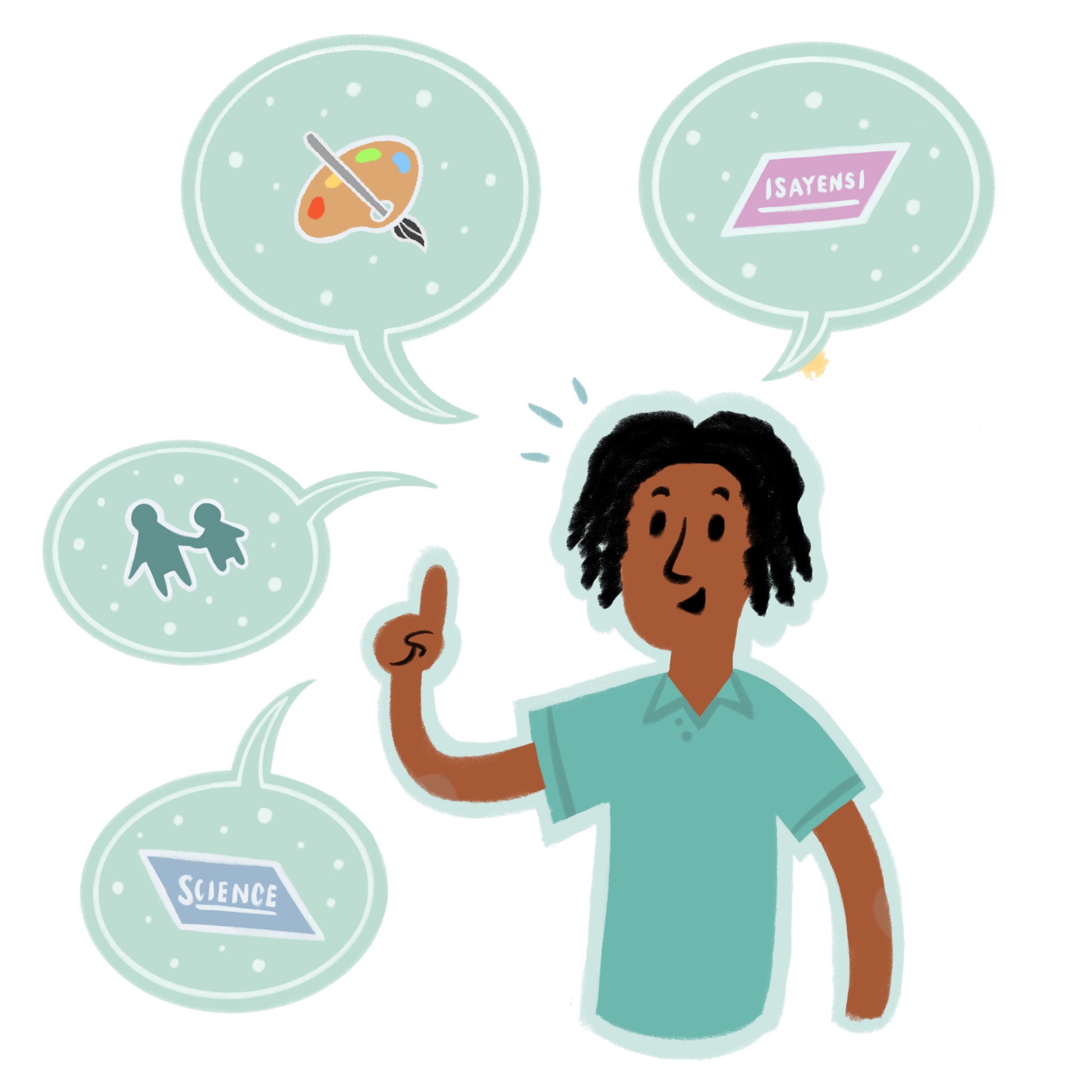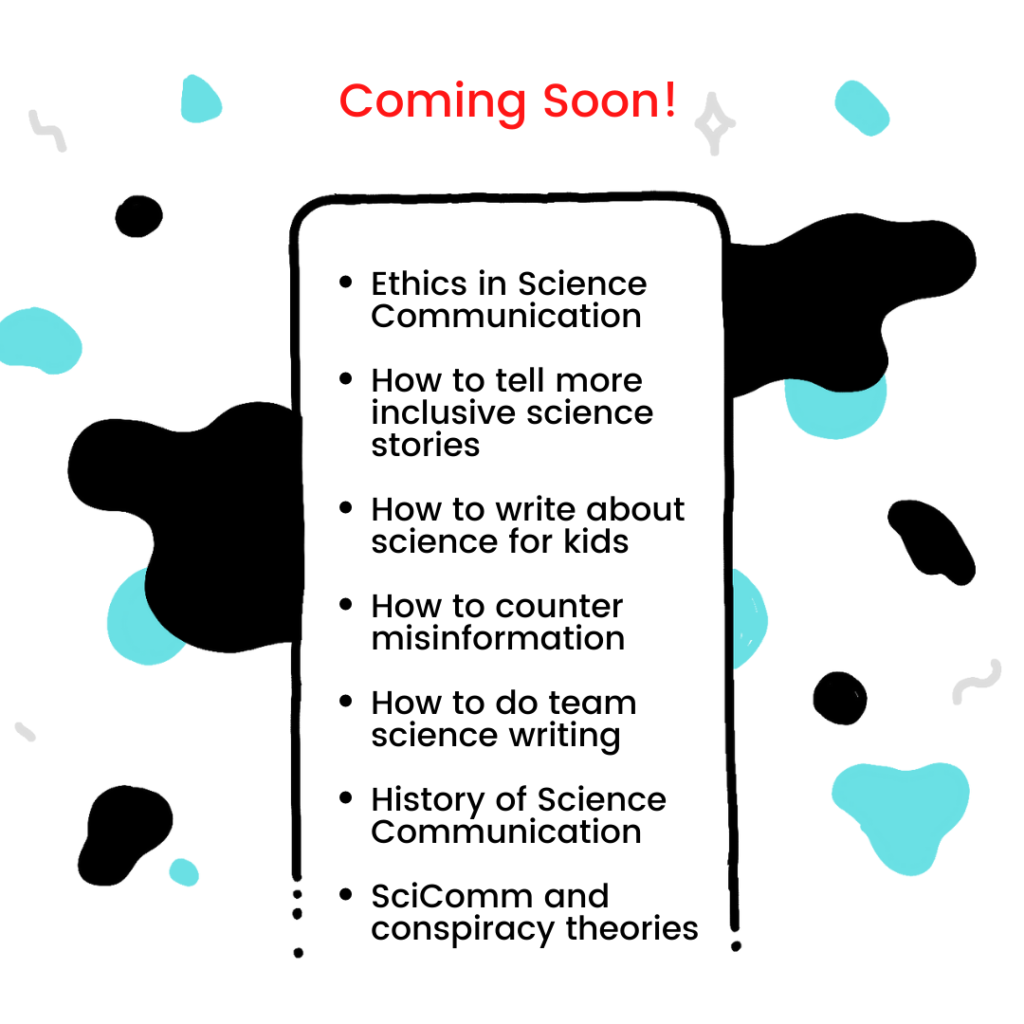
A Different Kind of SciComm Program
We’ve created a unique collection of Science Communication Lifeology courses to help you become a better communicator based on the science of science communication. This FREE collection consists of flashcard courses written and illustrated by standout science communicators and artists!
Getting started is as easy as 1, 2, 3!
- Browse our Lifeology University SciComm Program courses below.
- Find activity prompts at the end of each flashcard course. Complete course activities at your leisure to put your learning into practice!
- Join our Lifeology Slack Workspace where you can post responses to course activity prompts or discuss learning and insights with others.

In this course, learn how to practice culturally relevant science communication.



In this course, learn how to craft effective analogies to explain science.
In this course, learn how to approach writing your own Lifeology course. Let’s get started!
In this course, learn how to storyboard your Lifeology course card script, to bring it to life with visuals!



In this course, learn why it is important to make your writing clear and concise and how to do so.
In this course, learn how motivated reasoning can impact your science and health communication and what to do about it.
In this course, we will look at different ingredients you can use to help write about science for kids, making your content engaging, fun and accessible!



In this SciComm flashcard course, learn how to keep your writing simple but engaging for broad audiences.
In this SciComm flashcard course, learn what it means to be inclusive in your science communication and storytelling!
In this flashcard course, learn how to address conspiracy theories as a science communicator. Hint: Empathy is key.



This flashcard course, written by three “team” Lifeology course creators, will help you learn how to work better with collaborators and produce excellent collaborative scicomm products!
This flashcard course introduces you to ethical principles to consider in your daily science communication practice.
In this flashcard course, learn what an infodemic is and what you can do to slow and prevent the spread of misinformation.



In this flashcard course, learn about why misinformation spreads so rapidly in today’s age and how to arm yourself with the knowledge to counteract it.
In this flashcard course, learn a brief but inclusive history of science communication, featuring stories of SciComm from many eras and cultures.
In this flashcard course, learn how to empathize when talking about controversial science topics.



In this course, learn the basics of health literacy and how to create more actionable and engaging health and science communication materials.
“Sci-Art” (science-art) collaborations between scientists and artists can produce compelling science communication! In this course, learn how to collaborate successfully with artists.
How can you communicate science more effectively based on research in the field of science communication? Learn more in this course!



This course will introduce you to science communication and how to practice it effectively!
In this course, learn from the great Massimiano Bucchi about how style can be a signal of quality in science communication!
Learn about the health trust gap and how to fix it through better communication.



Art can increase public engagement in science, but it can also help those who practice science in many different ways.
Stories can move us to think, participate, reflect and act! Learn in this course how to tell science stories.
This course will introduce you to the basics of communicating science in visual stories!

In this course, learn how to practice culturally relevant science communication.

In this course, learn how to craft an effective analogy to explain science.

In this course, learn how to storyboard your Lifeology course card script, to bring it to life with visuals!

In this course, learn how to approach writing your own Lifeology course. Let’s get started!

In this course, learn why it is important to make your writing clear and concise and how to do so.

In this course, learn how motivated reasoning can impact your science and health communication and what to do about it.

In this course, we will look at different ingredients you can use to help write about science for kids, making your content engaging, fun and accessible!

In this SciComm flashcard course, learn what it means to be inclusive in your science communication and storytelling!

This flashcard course helps you address conspiracy theories as a science communicator.

This flashcard course, written by three “team” Lifeology course creators, will help you learn how to work better with collaborators and produce excellent collaborative scicomm products!

This flashcard course introduces you to ethical principles to consider in your daily science communication practice.

In this flashcard course, learn what an infodemic is and what you can do to slow and prevent the spread of misinformation.

In this flashcard course, learn about why misinformation spreads so rapidly in today’s age and how to arm yourself with the knowledge to counteract it.

In this flashcard course, learn a brief but inclusive history of science communication, featuring stories of scicomm from many eras and cultures.

In this flashcard course, learn how to empathize when talking about controversial science topics.

In this course, learn the basics of health literacy and how to create more actionable and engaging health and science communication materials.

“Sci-Art” (science-art) collaborations between scientists and artists can produce compelling science communication! In this course, learn how to collaborate successfully with artists.

How can you communicate science more effectively based on research in the field of science communication? Learn more in this course!

This course will introduce you to science communication and how to practice it effectively!

In this course, learn from the great Massimiano Bucchi about how style can be a signal of quality in science communication!

Learn about the health trust gap and how to fix it through better communication.

Art can increase public engagement in science, but it can also help those who practice science in many different ways.

Stories can move us to think, participate, reflect and act! Learn in this course how to tell science stories.

This course will introduce you to the basics of communicating science in visual stories!

More Courses Coming Soon!
Have a course request or want to create one with us? E-mail us at lifeology@lifeomic.com!